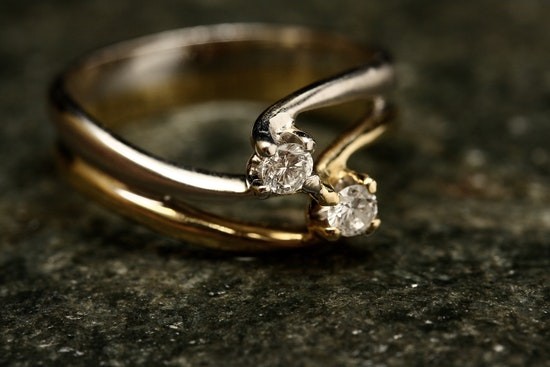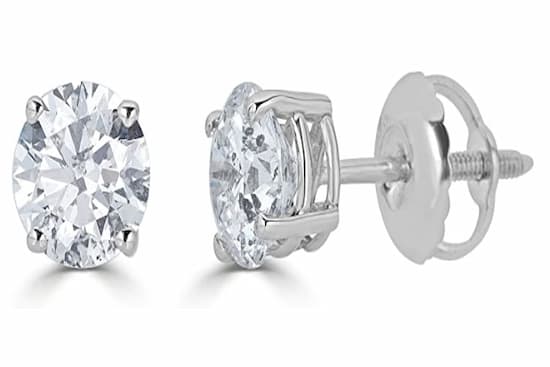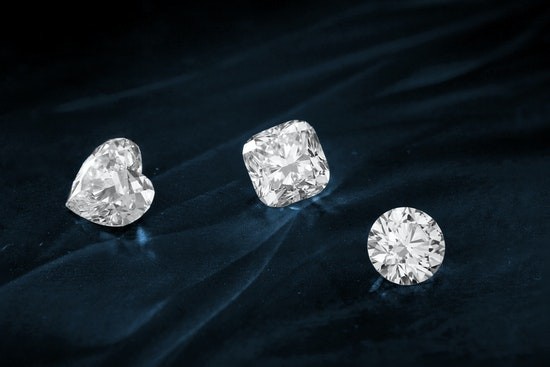Are diamonds rare? And why they’re so expensive compared to emerald, sapphire, or topaz? Have you ever asked these questions? I mean, the gemstones mentioned above are more colorful and vibrant if you put the idea in perspective. If you have these particular curiosities in mind, then you have come to the right place! Diamonds are known for their amazing luster and durability. However, the reason behind their expensiveness isn’t what it seems to be. And several factors affect its overall cost. In this article, I’ll provide the information you need and give you a definitive answer to why many people treat them as they are today. So once again, are diamonds rare? If so, how rare are diamonds? And what are the factors that affect their price? Without further ado, let’s start…

Diamond is a rare mineral that’s mostly composed of carbon. It is naturally found deep beneath the earth that makes them extremely hard to mine. The definition of the diamond can be described into four parts—chemical structure, origin, rarity, and when it becomes a valuable commodity. I’ll explain the truth about the features of the diamonds in the next section and give you a definitive answer to the “diamonds rarity.” For now, let’s talk about three of the said topics and discuss their rarity in the following chapter—
Each atom in a diamond is structured with four more compounds of carbon. These atoms are connected by covalent bonds—the strongest type of chemical bond. Such an instance explains the hardness and durability of diamonds. In fact, diamonds have the highest rating on the hardness scale among minerals with 10 MOH’S. It is also resistant to chemical exposure and high temperature.
Diamonds are formed under intense heat deep beneath the ground (near the mantle, to be exact). And they only surface near ground level through volcanic eruptions. These precious minerals are within a rock referred to as xenoliths. They are mined by breaking the rocks and carefully gathering the rare minerals. As you see, aside from the lustrous aesthetics of the diamond, the mining process is so intricate and arduous.
Such a question is valid and relevant since our early ancestors may not know its true value back then. The earliest known descriptions of diamonds were found in 4th BC in the ancient Sanskrit manuscript of India. During these eras, they are only valued as a common commodity. They had become a valued jewelry item from the 1800s when socialite women started wearing them during high-end social gatherings. As time goes by, experts were able to determine its quality which resulted in its high demand. Since then, diamonds are treated with such value and care. And such an instance is only proper because the mineral is extremely reliable and difficult to mine.
The next section of the article answers the question, are diamonds rare? How common are diamonds? So let’s continue and find out…
You frequently hear the notion that diamonds are expensive because they are rare. Although this is true, such a scenario isn’t the entire truth either. Yes, these minerals are difficult to extract but do you know that jades, rubies, emeralds, and sapphire are rarer than diamonds? So does this mean that diamonds aren’t rare? Are diamonds worth anything? Or are diamonds worthless after all? If you have these questions in mind, then bear in mind that such a concept is wrong. You have to remember that all gemstones are considered rare because they’re all formed under intense heat deep beneath the earth.
Why are diamonds so valuable? How much are diamonds really worth? Several factors affect the overall cost of diamonds and make them more valuable than other rare minerals such as sapphire, emerald, and ruby. The basic key points that make them highly valuable were already discussed earlier, such as the rarity, the difficulty in the mining process, and durability. Additionally, the price is also affected by the four C’s of valuing a gemstone—carat, color, clarity, cut. Apparently, diamond is the top mineral in regards to the mentioned factors.
Ultimately, the high demand for diamond and the beliefs and myths behind it makes them way more expensive than other rare gemstones. As I explained, the use of diamonds boomed in the 1800s when they’ve become the most adorned gemstone at that period. And such a trend has continued up to the present day. If you’re looking for the best diamond earpiece in the market, then you have to check out this 14K Round-Cut Diamond.

Advertising campaigns by marketers have also played a huge role in making these precious gems are highly sought after. Let’s take, for example, the case of De Beers Mining Company in Botswana. Back in the day, the company discovered huge stacks of diamonds during one of its mining operations. They’re all aware that such events would affect supply, as it would decrease the value of the diamonds in one way or the other. To prevent this event, they have marketed the stones as rare and crafted them in smaller batches. Needless to say that it was effective, and a lot of people bought the scarcity tactic they have schemed.
There are a lot of myths surrounding the characteristics of diamonds. And in this section, I will provide you the answers to some of these common misconceptions—
The first popular misconception about diamonds is that the supply is declining, which should explain why they’re expensive. While there’s a truth about the supply of colored diamonds like rose pink and yellow are declining, the stocks of the typical clear-colored diamonds aren’t necessarily short in supply. So how many diamonds are in the world? Here is an overview—the current global reserve is approximately 1.2 billion carats. Russia has the largest reserves, with an estimated over 650 million carats of diamonds nationwide.
Are diamonds rare? They are indeed rare! However, as I repeatedly emphasized throughout the content, gemstones are rare in general. And there are precious minerals that are rarer than diamonds. Several factors affect the expensiveness of diamonds, and the most significant element that increases its value is its quality, marketing tactics, and the belief in the grandeur attached to owning one of them.
Well, this notion is actually partially true. The size or carat of the diamond is only among the factors used in identifying the value of the diamond. The four C’s determines the estimated value of the diamond—carat, color, clarity, cut. Each element is essential in its own way, and none of them outweighs one to the other. There should balance between the four C’s when conducting the valuing process. For example, you may have a 15-carat diamond, but if the clarity is low or the cuts are poor, then do not expect a high-value item. In this manner, a smaller diamond could even cost more compared to a larger diamond. I will explain the four C’s in the next and last section…

The four C’s of estimating gem values are already mentioned twice in this article. But what are they really? Are diamonds worthless if guidelines in regards to such standards are not particularly followed? In this section, I will provide you the answer to such matter—
Carats are the actual size of the diamonds. In regards to the size, the larger, the better. Also, there’s something that is referred to as the “magic size.” It is basically a measurement that includes the sizes of 0.50 carat, 1 carat, 5 carats, or higher. Once the material has met these standards, its values increase at the same time. For instance, the cost of the 1-carat diamond would go higher by 15% to 20%. And the same goes with higher carats.
Diamonds are known for their clear characteristics. Therefore, the shades of color may affect the price of the diamond—the clearer the diamonds are, the better.
The standard for clarity and color in diamonds are similar. The standard is that they’re supposed to be clear and don’t have any color at all. The price is expected to depreciate the more color the diamond has.
Each diamond cuts have specific grades assigned to them. With this being said—the cost of the diamonds goes up or down depending on the cut grades. Also, you have to take note of the symmetry before a grade is provided—the rounder the diamond, the better. The price of the gemstone is expected to go up by 15% or higher if the cut grade is Very Good (VG) and Good (G). A price of 7% or 10% higher is given to diamonds that are graded with triple EX cut grade.
Well, I believe that’s just about it! I hope today’s discussion has provided you the information you need in determining the answer—are diamonds rare?
Some of the commonly asked questions about “are diamonds rare?” are as follows—
Although diamonds are not the rarest precious mineral, they are the most expensive because of their apparent luster and how they are marketed.
Gold is significantly rarer and more challenging to mine compared to diamonds. If you want to check if your gold is real, you can take it to a professional jeweler for verification.
As of today, the current amount of reserves is estimated to be at 1.2 billion carats. And the nation with the largest reserves is Russia, with over 650 million carats.
Do you know the unique meaning of ankle bracelet? This article will introduce you to the history, significance of ankle bracelets and some common types of ankle bracelets.
Read MoreAlloy jewelry is the most common accessory used today—it is very affordable compared to pure precious metals, yet it is high-grade and highly durable.
Read MoreWe often see 925 stamp on the jewelry. But do you really know what 925 stamp on jewelry means? Let's take a look.
Read MoreYou may love stunning silver ornaments, but how much do you know about silver? Is silver jewelry made of pure silver? What is sterling 925 silver? And how to identify them? This article will help you know them better.
Read More